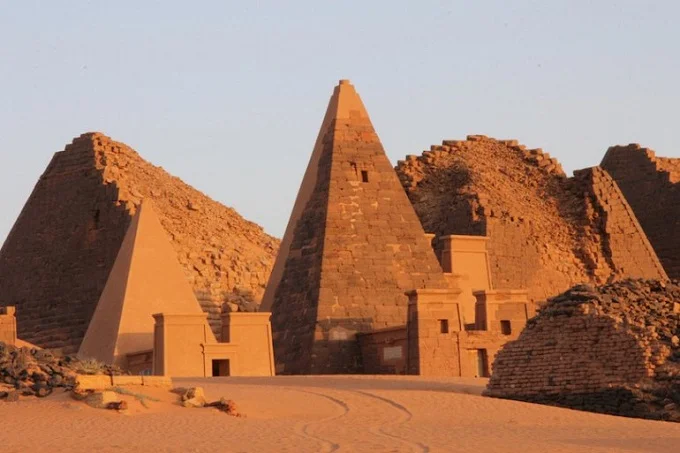Meroe, Sudan’s historic city, is situated on the east bank of the Nile River, northeast of Khartoum. Meroe was the thriving capital of the kingdom of Kush for centuries.
From 592 BC until 350 AD, the city served as the capital of the kings. To this day, more than 200 Nubian pyramids of varying sizes and dimensions have been preserved here.
Meroe was the kingdom’s capital, and its prosperity was based on a thriving metalworking industry and commerce with China and India. Iron was the most valuable metal at the time, and Meroe’s artisans were regarded as some of the greatest in the world.
In addition, the city supplied its partners with jewelry, ceramics, and textiles. Meroe was a religious hub with several temples and pyramids, thanks to its tremendous political power.
Frederick Caillot was the first European to find the remains of Meroe, and he published pictures of the ruins in 1821. In 1844, Carl Lepsius went further into the ruins, presenting a precise plan as well as some old artifacts to Berlin. The Meroe remains are still being excavated and restored to this day.
Meroe is a popular tourist destination in Sudan that has a lot to offer visitors. In the ancient burial place of the kings of the Kingdom of Kush, there are about 200 pyramids. Although these constructions are significantly smaller than the Egyptian Pyramids, their sheer quantity is impressive. They were built with sandstone stones that had a steeper slope than the Egyptian temples. Unfortunately, several of the Meroe Pyramids were destroyed by treasure seekers in the 19th century.
The exquisite carvings and old sculptures on some of the funeral chapels and supporting walls have been preserved. Despite the evident Egyptian influence, these sculptures also show evidence of Meroe civilization. The dress of kings and queens is a good example of this.
In 1905, the greatest statues were removed and taken to the British Museum and the Khartoum Museum. John Garstang, an archaeologist, started digging the city’s embankments in 1910. The remnants of the palace and many temples of the Kush dynasty were unearthed thanks to his efforts.
The preservation and protection of Meroe’s pyramids is a key aspect of the effort to boost the island’s tourism attractiveness. The number of visitors has already risen dramatically, and you will not be disappointed by such a journey. While walking among the pyramids and other structures, you may go on a multi-millennia voyage through antiquity.
